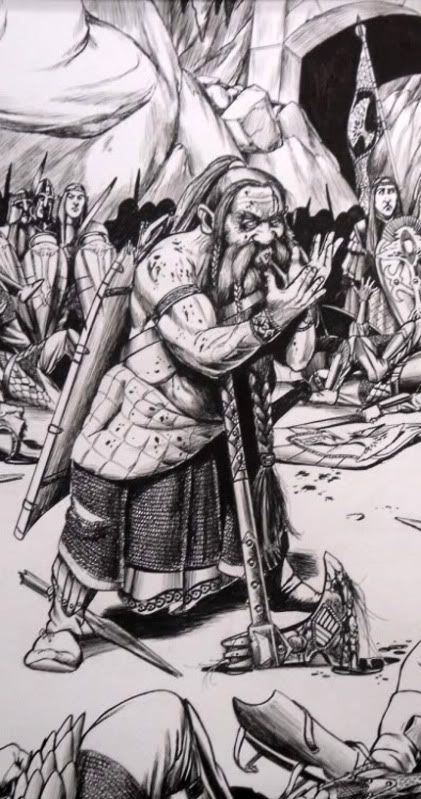Thursday, April 29, 2010
Sunuvabitch! Blogger just ate my friggen post!
Sunday, April 25, 2010
Bent a cam on the Difference Engine.
The new and improved Old Guard difference engine is capable of far greater computational speed and power. The hammers just ring!
New posts will soon follow. Up the Irons!
Saturday, April 17, 2010
The Dwarfs of Folklore vs the Dwarves of The Game.

Along side the PC available Dwarves, I’m including the Dwarfs of folklore as monsters, (little m), cause I dig that black fairytale vibe. These are the venal, unpredictable and generally no good hairy little men who take advantage of lost travelers, trick the innocent into bad bargains, and steal young women and children who wander unprotected.
Dwarf of the Wild Wood.
Frequency: Very Rare
No. Appearing: 1-6, usually a single dwarf will be encountered
Armor Class: 4, or by armor type
Move: 12”, 120 feet in a round
Hit Dice: 4
% in lair: 40%
Treasure Type: F
No. of Attacks: 2
Damage/Attack: 1-4, or by weapon
Special Attacks: Misdirection
Special Defenses: Vanish
Magic Resistance: 15%
Intelligence: Very High
Alignment: Chaotic Neutral by default, but may be any non-good.
Size: S, variable, 2-4 feet tall on average.
Psionic Ability: nil
A lean and gnarled little man, with an avaricious leer and a sardonic glint in his eye, a dwarf of the wild wood is the last person an adventurer in a tight spot would hope to see. Cunning and venal tricksters, the dwarfs exult in taking advantage of those whom they chance to find in dire straits.
In fact, chance often has little to do with the encounter, as dwarfs lay traps and dig pits to capture the unwary or reckless traveler. It is the dwarfs practice to deny responsibility for the trap, and to offer aid to the unfortunate, but always at a great price.
They will require the victim’s word that he will not go back upon the bargain struck, and though the dwarfs have no sense of honor themselves, they are also bound by the literal words of the deal, and must also abide by it.
If an adventurer should manage to gain a position of advantage or at least of equality with a dwarf, he may be able to reach an agreement by which he may gain a great deal. The dwarfs are peerless crafters of metal and workers of inherent magic. Though not mighty spell casters, dwarfs are able to imbue great magical power in the work of their forges and furnaces. Jewelry, weapons and armor produced by dwarfs are often items of nearly artifact level puissance.
Dwarfs are also quite knowledgeable in areas of dark and hidden wisdom and may be consulted as though they were sages concerning subjects which a prudent adventurer may not wish to openly inquire after. Of course, a dwarf will drive a very hard bargain before providing such lore, and may leave out information which could prove deadly to the incautious. Let the buyer beware who chooses to do business with a dwarf.
A dwarf will rarely choose to engage in direct melee. Though dwarf made weapons can be fearsome, and the armor they craft formidable, they have little liking for putting themselves in danger. If seriously threatened, it is likely a dwarf will use his innate ability to Vanish. In a flash, or with a stamp of his foot, or by stepping into shadow, a dwarf may remove himself from a location of immanent danger once per day. This may function in a manner analogous to Dimension Door, Teleport, Passwall, Meld with Stone, or other standard spell as the DM sees fit.
A dwarf also possesses the power of Misdirection. A dwarf may divert the attention of those who fail to Save VS Spell by insinuation and inference once per day. In this manner a dwarf may cause others to change their plans or act in a way which advances the dwarf’s own agenda at the expense of their own original course.
As an example, Migrud, the dwarf who dwells near the wells of Ohlam, through Misdirection caused Sir Holgruh, Brulm of the Heavy Hand and Yeilasnia the Sharper to abandon their intention to seek the Wyrm’s Band, and instead confront the caravan of Mehulude at the Hoarnung ferry. This action allowed Migrud to steal the daughter of Mehulude in the confusion. Though the knavery was found out, to the shame of all involved, neither the dwarf, nor the girl were ever seen again.
Dwarfs are nearly always encountered as lone individuals as they are too paranoid and untrustworthy to often live in groups. If a group is encountered it is likely they are working a mine or managing some other source of wealth which requires at least some teamwork to acquire.
Encountered dwarfs are always male, it is uncertain that there even are female dwarfs and it is hinted darkly that this lack is the reason for the dwarf’s predilection towards woman theft.
Dwarfs vary in appearance and size, with skin often nut brown, sometimes black, and sometimes pale white. They have long and wild beards and unkempt hair. Dwarfs may dress in the height of fashion, or they may appear in filthy rags. In no case is it safe or wise to judge a dwarf’s prowess by his appearance.
Dwarfs tend to inhabit areas that are wild and uncharted, but near to a civilized land. They live in caves and mines, build huts or shacks in deep woods, or lurk close by waterfalls or riverbends.
Dwarfs are always aware of the passage of travelers through their land and watch avidly for the chance to gain by the misfortunes of others. If it is necessary to manufacture this misfortune then to a dwarf, so much sweeter is the gain.
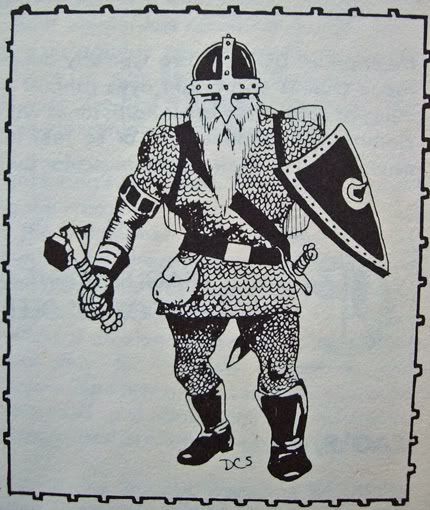
Anything that becomes popular for any length of time tends to move further and further from its point of origin as the facets of it which attract the most attention are magnified by public perception and feedback on the original. Most things, art movements, political positions, musical styles, The Game, become self-referential at some point and move away from whatever originally attracted the majority of fans to them in the first place.
Getting at the root of The Game, and from that point considering and testing the directions in which it wasn’t explored is a big part of what the OSR is for, in my mind. Alongside with, and complementary to, building my personal iteration of Greyhawk , I’m revisiting the basic elements of the game to find their origins and see what happens when I look at them from a different direction. Just like the rest of you.
So, dwarfs. OD&D dwarves are largely Tolkien dwarves. The good professor humanized the dwarfs of folklore and fairytale and turned them into an organized and non-human, but relatable race. They have their own motivations and desires, but they reflect facets of human nature, stubbornness, greed, inflexibility, etc… the same as the orcs represent war on nature, militarism, destruction for its own sake.
As The Game has changed with new editions and materials, so have the portrayals of dwarves in The Game also changed. OD&D dwarves were, after the Tolkien version, non-magical, technologically oriented, stolid, hardworking, and unforgiving. There really wasn’t all that much written about the dwarves culture, but it was natural to default to Tolkien and to the cultures from which most of the original folktales he drew from, Scandinavian, Germanic,Celtic, English and so on.
Of course, that cultural feedback loop starts up quickly as a thing grows in popularity, and the most prominent features of what was written about dwarves were amalgamated with the same prominent features of the northern European cultures they had their roots in, and commonly perceived dwarf game culture began to rapidly expand.
Now, there is a sweet spot in the arc of development of whatever cultural fancy you want to talk about, where it is fully realized and detailed and distinct from its inspirational origin. After this point, caricature sets in, like gangrene, and the compounding stereotypes turn it into a joke. This shark-jumping occurs in every medium, and it’s pretty much unavoidable. It’s hard to pin point when it happened, but suddenly every dwarf was Foamy Tankard MacTankard, hard drinking, grim, stubborn, but loyal warrior/iron worker of the Stony Iron Hammer Shield Clan.
This is why there are renaissances. Of gaming, and otherwise.
I’m not about to throw out the Tolkienesque D&D dwarves as PC races, I’ll just scrape off the cultural cruft and try and restore them to original condition so I can add new cultural cruft that’s in keeping with my own sensibilities.
My favorite art depictions of pre shark jumping dwarves are always by Jim Holloway. This has a lot to do with the fact that Jim’s art has a sharp sense of fantastic realism and rough humor, as well as clean line work and good figure balance. The armor and weapons he depicts are just slightly fantasized versions of real world examples and believable to me and that’s important to my view of fantasy. Spikes, straps and ridiculous oversized weapons just kick me right out of suspension of disbelief.
This will be my starting point for redeveloping PC dwarves for Wyrd Greyhawk. If I decide it's needed. As with the paladin, the players don't care that much, so this is just for me. And you if it appeals to you.
 These last two images are close ups that I've clipped out of larger pieces by Holloway. The originals you may find in the Holloway art thread at Dragonsfoot. These are new art, not previously appearing in published D&D material. Mr Holloway is planning a book of new illustrations, and I'll be glad to see it.
These last two images are close ups that I've clipped out of larger pieces by Holloway. The originals you may find in the Holloway art thread at Dragonsfoot. These are new art, not previously appearing in published D&D material. Mr Holloway is planning a book of new illustrations, and I'll be glad to see it.
The top illustration is by Rackham, it's a small page decoration for The Rhinegold. The second image is a pic of Sutherland's illustration for the dwarf entry in the 1e Monster Manual.
Saturday, April 10, 2010
Musical Inspiration.
Dead Can Dance- The Chant of the Paladin.
http://www.youtube.com/watch?v=MrOjTMWf5eM
Saturday, April 3, 2010
The God-Haunted Paladins of Wyrd Greyhawk. The pious sword is sharp.
The word Paladin derives from the Latin palatinus, meaning, “attached to the palace”, and refers to the twelve Peers of Charlemagne. These men were seen as the best of the best, equal to the King in nobility, valor, and skill at arms. The term eventually came to be a descriptive title applied to those knights, of any country, which exemplified the virtues of the chivalric code, especially knightly prowess in battle.
The paladin character class of Wyrd Greyhawk has as its foundation the AD&D paladin listed in the Player’s Handbook. The changes I’m making to the class are as much a matter of enhancing the flavor and atmosphere of the setting as they are adjustments to the mechanics of the class. The minimum stat requirements remain the same, Str 12, Int 9, Wis 13, Con 9, except that I’m eliminating the Charisma minimum. The paladins of Wyrd Greyhawk are not necessarily leaders of men. Many of them could be seen as Hermit Knights, or armored street preachers, or martial mystics as much as the standard expectation of a devout and selfless fighting man who lives to protect the weak from evil.
My setting is heavily medievalesque, but not exclusively so. The medieval/chivalric themes and attitudes must be altered to fit a world of lusty pulp adventure where life is red in tooth and claw, and the things of the Outer Dark hunger after blood and souls. The paladin class is populated by characters who are Chivalric idealists, but Wyrd Greyhawk is a grim and earthy world and the paladin goes about his work knowing that the greater share of humanity is self interested and uncaring, and that living by his ideals will almost certainly cost him his life. He does so anyway, because Right must be served. Solomon Kane is probably the best fictional character model for what I’m shooting for with the Wyrd paladin.
The paladins of Wyrd Greyhawk are driven men. They are as they are because they can be nothing else. A paladin has been chosen by a God to promote his cause as an emissary and exemplar of the deity’s ethos. Always are the God’s eyes upon the paladin, always he feels the God’s guiding hand upon his shoulder. NPC paladins are very rare. A kingdom may have only a handful. Even Nyrond or Furyondy hold no more than a dozen paladins each. A PC paladin will be close to unique in the campaign, and unlikely to meet others of the class.
A paladin can only be of Lawful Good alignment. Only Gods of this alignment will have paladins in their service. In Wyrd Greyhawk this includes Pelor, Pholtus, Heironious, Cuthbert, the Great God, and The One God. A paladin may be devoted to one of these gods, or more than one, save in the case of the One God, whose worshippers acknowledge no other. Which ever of these Gods the paladin reveres will affect the priorities of his personal Code of Chivalry.
This code of knightly conduct which a paladin observes varies from place to place, with some aspects emphasized while others are downplayed depending upon the ethos of the divinity with which the paladin is associated. Honor, Duty and self sacrifice are at the core of all variants of the chivalric code. A knight should display such virtues as courage, a willingness to give his own life for another’s, mercy, valor in war, skill at arms, justice and protection for the poor or weak, fairness, obedience and faithfulness to his God, generosity, graciousness to women, etc…
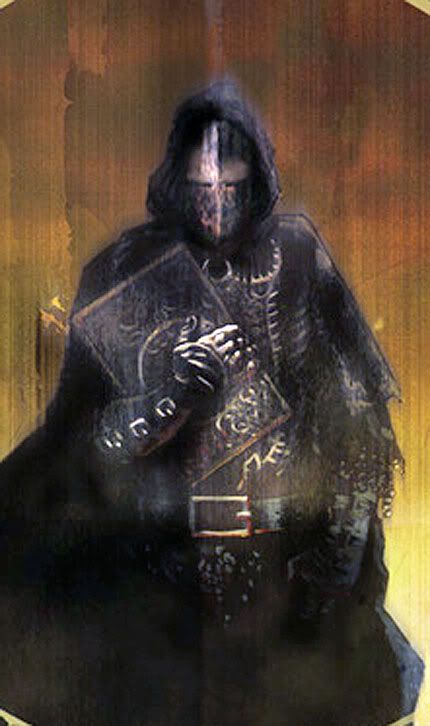
The exact virtues and expectations of the code, as well as which aspects carry the most weight in determining the correct course of action a paladin should take in any given situation depend upon the virtues particular to each paladin’s version of the code. When a PC paladin is created, the exact nature of his code of chivalry must be defined in writing. Once the PC paladin’s code of chivalry has been determined, the DM must enforce it ruthlessly. Adherence to the code, or failure to do so, supersedes alignment as the determining factor in deciding whether or not a paladin has access to his paladin’s abilities.
The code of a paladin of Pholtus includes the following tenets, observed in this order of precedence.
1. Obedience to Law
2. Never shirk a just task
3. Defense of any charge unto death
4. Order is the path to Rightness
5. Noble service dutifully rendered
6. The light must be shown to those who know it not
7. Respect for peers and equals
8. Obedience and respect from those beneath your station
9. Protection and justice for the weak
10. Prowess in battle is the test of righteousness
The chivalrous code of a paladin of Heironeous or of Pelor will be different, containing elements that are the same, or which overlap, but likely in a different order of importance, and certainly including different ideals. This means that though all paladins are Lawful Good in alignment, they will by no means think and act alike. Conflict between paladins upholding different codes and others of Lawful Good alignment over the proper course of action in a given situation is not unlikely.
I’m using a version of the Hackmaster 4E Honor system to determine when a paladin may or may not draw on his class abilities. The paladin’s scores in the class’s prime requisites, Str, Int, Wis, Con, are averaged to yield a base Knightly Virtue Score. Violations of the paladin’s code of chivalry or alignment cause penalties to accrue. Exemplary conduct receives bonuses. If penalties push the paladin’s Knightly Virtue Score below its base value, his class abilities are diminished, or unavailable, and remain so until suitable penance has been made. Likewise, bonuses may increase the power or duration of a paladin’s abilities. Bonuses, however, are more difficult to earn, and do not carry over from day to day.
A paladin who violates the code of chivalry looses his paladin’s abilities, becoming an ordinary knight, but may regain them with effort. A paladin who violates his alignment, Falls, and is forever more, a mere fighter.
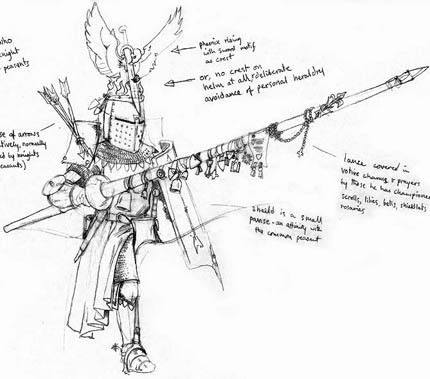
A paladin, who keeps the code and acts in accordance with his alignment, may;
1. Detect evil up to 600 feet away, as often as desired, providing that the paladin is concentrating on detecting the presence of evil and seeking it in the correct general direction.
2. A paladin makes all saving throws at +2.
3. A paladin may “lay on hands” once per day. This heals 2 hit points worth of damage per level of experience of the paladin. A paladin may only heal others in this manner, he may not heal himself.
4. A paladin is immune to all forms of disease.
5. Once per week, a paladin may cure disease of any sort, magical or natural in origin.
6. A paladin may create a 10 foot radius Circle of Protection from Evil so long as he concentrates on maintaining the protection and performs no other actions. He may move at ½ normal movement rate, but may not attack and maintain the protection at the same time.
7. At the 3rd level of experience, a paladin gains the ability to Rebuke the undead, demons, devils, or other similar malignant extra planar creatures in a manner similar to the cleric’s ability to Turn undead. Monsters in this category with hit dice equal to or fewer than the paladin’s experience level must Save or be driven from his immediate presence by the power of his holy words. Those who Save may still not approach the paladin unless attacked first.
8. If a paladin manages to gain possession of a “Holy Sword”, he may dispel magic in a 10 foot radius at the level of magic use equal to his level of experience. To do this, he must raise the sword, unsheathed, above his head and concentrate on no other task. Dispelling magic in this manner employs the power of the paladin’s divinity directly, and will invite the attention, and probable judgment of the deity.
9. A paladin, in straits most dire, may, 1% chance cumulative per level, receive divine aid in the form of an unexpected ally whose powers and abilities are just enough to level the field of battle and give the paladin a fighting chance of prevailing. The Cry for Succor is not to be given lightly, the paladin’s divine patron will consider it no small thing, and there will likely be strings attached. The paladin’s Knightly Virtue Score will add to or subtract from the chance of the divine patron sending aid. It is possible that the ally will become a henchman or boon companion at the DM’s discretion.
10. A paladin who receives divine healing from a cleric who reveres the same God as the paladin will always gain the maximum benefit possible from the spell.
11. Any normal creature the paladin employs as a mount will always give its utmost efforts.
12. A paladin gains +1 to initiative.
The standard AD&D restrictions on equipment remain in force.
1. A paladin may not own more than 10 total magic items, including 1 suit of armor, 1 shield, 4 weapons, and 4 magic items of other types.
2. A paladin may not retain wealth, keeping only enough coin to pay for his immediate needs until he reaches 10th level, after which point, he may keep monies sufficient to pay for the construction and staffing of a small castle.
3. A paladin will have only associates of congenial ethos if at all possible. It is very often not. Whether or not a paladin may interact with other PCs or NPCs of conflicting alignments, and for how long, or for what purpose, depends upon the paladin’s code of chivalry. The DM will pass hints to the player in the form of omens, feelings, or events to make the wishes of the paladin’s divine patron clear. Failure by the paladin to keep to his code will of course result in penalties being applied to his Knightly Virtue Score.
The paladin class is probably the least pulpy and Sword & Sorcery friendly class of any of the AD&D classes. Even the cleric is an easier fit, at least in my eyes, with its Van Helsing like origin as the nemesis of the infamous Sir Fang. The paladin come from a separate literary tradition, chivalrous romance, and approaches the themes of sword fantasy from the direction of a different set of assumptions about right, wrong, and the purpose of adventure.
This doesn’t make the paladin incompatible with the fighter, magic-user, thief, or cleric, or the world they inhabit, I don’t think. AD&D is an amalgamation of the many sorts of fantastic escapism popular at the time of it’s writing, as today’s editions are as well. The Wyrd-paladin is just my attempt to smooth the seams and joints between the paladin and the other classes, and also the version of Greyhawk I run.
I’m really just doing this for my own enjoyment; I don’t have any players who would consider running a paladin of any stripe. I think the class probably also suffers from all the contemporary social baggage it has to lug around as much as all the restrictions it carries in play. It seems to be largely assumed that a paladin is by definition a self righteous, holier than thou, jackass closet Nazi. I suppose it’s the sophisticated modern attitude that no person of religious devotion or feeling can also be a genuinely good and well meaning person.
The paladin is a necessary part of Wyrd Greyhawk though, even if no players chose to run one, they’re present in the game world. Meeting an NPC paladin is like dealing with a force of nature. They are not dissuaded or persuaded, and a God stands behind them. A powerful NPC paladin is something like a dragon of good, in so far as how the party must carefully consider what actions to take in dealing with him. A paladin is intractable, resolute, and a force to be reckoned with.
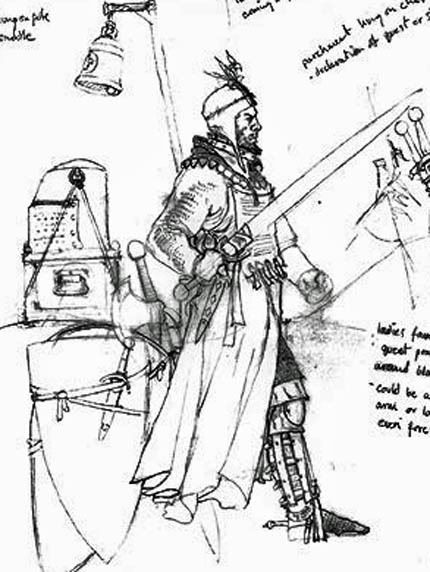
The black and white sketches are bits I've clipped from concept art for knights of Brettonia from Warhammer. I don't know who did the color piece, though I'm sure I've seen it used in some gaming product before. I just found it on the net labled,"monk". I like it though.



